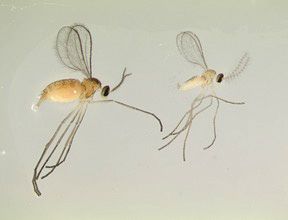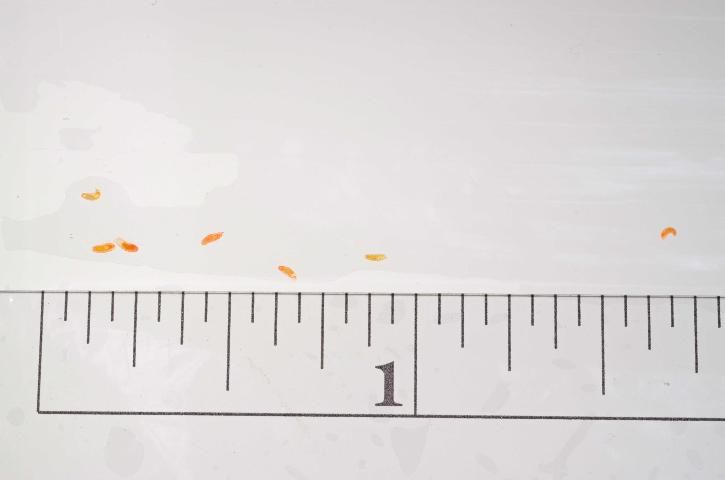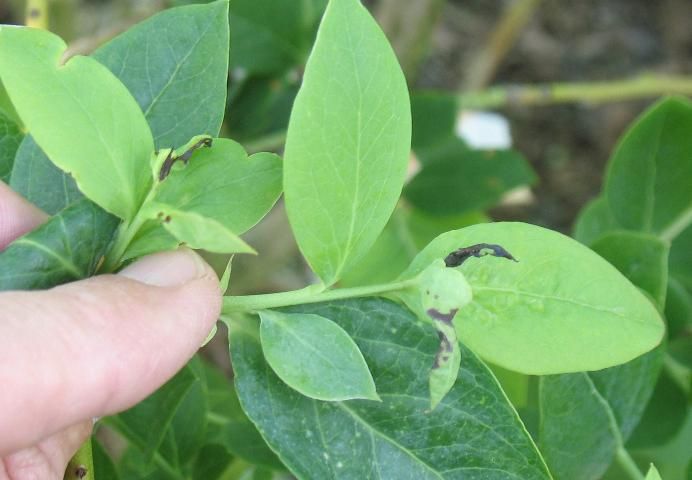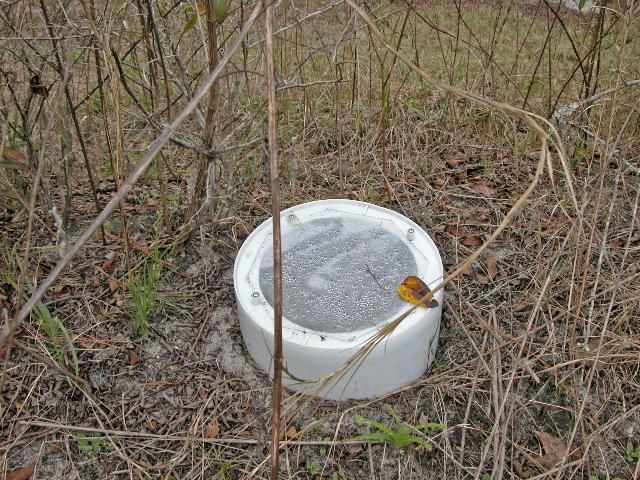Introduction
Blueberry gall midge (Dasineura oxycoccana (Johnson)) is a small fly native to North America that feeds on blueberries and cranberries (Vaccinium spp.). It can be found throughout the United States, including in Florida, where its larvae feed on southern highbush blueberry (SHB) and rabbiteye floral and vegetative buds. Reports of blueberry gall midge damage on SHB in Florida have become more common in recent years. In some cases where there was severe feeding damage to floral buds, the midge significantly impacted yield.
Description and Life Cycle
The adult blueberry gall midge is slightly smaller than a mosquito, reaching a size of 2–3 mm (females are larger than males) (Figure 1). The adult fly lives for only 2 to 3 days and becomes active when the temperature exceeds 60°F. It appears that mild winters characterized by cool and warm spells facilitate high midge activity. In central Florida, the adult fly becomes active in late fall (November to December), and peak activity appears to be in January and February. In north central Florida, adults are active in November; however, cool temperatures in December and early January can reduce midge populations. Peak activity in north central Florida occurs from late February to March. A single female is capable of laying as many as 15 eggs per bud, forcing its ovipositor (egg-laying tubular organ) between the folds of flower and leaf buds just after bud swell, when scales begin to separate. Newly laid eggs appear as tiny white cylindrical structures that are approximately 0.25 mm long. Eggs are best observed with a 10X or higher magnification hand lens. Eggs hatch in 2 to 3 days into young larvae (approximately 0.7 mm in length) that are difficult to observe within the buds. The larvae are translucent to white for the first 3 to 5 days, eventually turning orange when they mature in about 8 to 10 days (Figure 2). The larvae pass through three instars and during this time feed on the interiors of floral and vegetative bud tissues. The larvae then drop to the ground to pupate in the soil and emerge as adults. It is believed that adult males typically emerge approximately two weeks before adult females.

Credit: O. Liburd, UF/IFAS

Credit: O. Liburd, UF/IFAS
During harvest, midge populations typically decrease, partially due to sprays for other invasive pests such as spotted wing drosophila (SWD) and blueberry maggot. There are also fewer developing floral and vegetative buds available to the female adults. After the harvest season is completed and pruning begins, there can be a resurgence in midge populations along with the new flush of vegetative growth, although they are generally fewer in number than spring and fall populations. There can be as many as six generations of gall midge per year in Florida (3 in the spring, 2 in the fall and 1 generation in early summer).
Damage
Gall midge larvae feed on the interiors of floral bud tissues, inducing necrosis, brown lesions, and bud abortion (Figure 3) with accompanying poor fruit set. With heavy gall midge damage to floral buds, there will typically be a lighter bloom because many of these buds will abort (e.g., only 1 or 2 florets may be seen instead of the usual 5 to 6, and therefore fruit clusters will produce only 1 or 2 berries per cluster). It should be noted that damage to flower buds (browning, shriveling, and disintegration) can also be caused by freezes and hydrogen cyanamide over-application. Poor fruit set and excessive dropping of undeveloped green fruit can also be caused by poor pollination.

Credit: O. Liburd, UF/IFAS
On vegetative buds, gall midge feeding results in misshapen and deformed leaves, often with a blackened bud tip as the new foliage starts to emerge (Figure 4).

Credit: O. Liburd, UF/IFAS
Monitoring and Control
Gall midge larvae are difficult to kill using contact insecticides because they are protected while inside the buds. Insecticide applications must be timed to kill adults before they lay eggs. The key to correct timing for managing gall midge populations is to conduct careful monitoring. It is important to use tools that will detect the presence of gall midge early in the season. Clear sticky traps hung on the sides of blueberry bushes close to the ground can be used to monitor adults (1–3 traps per acre) (Figure 5). Alternatively, a white bucket trap (Figure 6) with a sticky Plexiglas top placed under bushes in direct contact with soil or pine bark can detect new adults emerging from the ground (3–5 traps per acre). If not available commercially, both of these traps are relatively simple to make. The clear sticky trap is a one-square-foot sheet of transparent plastic (a six-inch-square sheet can also be used) covered with a sticky glue with a string or tie-wire to attach it to the bush. The bucket trap is essentially an inverted 5-gallon bucket with Plexiglas (with a sticky inside surface) replacing a portion of the bottom, facing upward towards the light. Recommended chemical controls should be used when two or more adults are present in the traps. If for some reason traps are not used for monitoring, preventive spray applications can be made. The first application should be made right before floral bud break, with a second application made ten days later. At a minimum, monitoring for larvae should be done by placing young stems with buds into a ziptop type plastic bag at room temperature. If present, mature orange larvae will begin to emerge after 3 to 4 days.

Credit: O. Liburd, UF/IFAS

Credit: O. Liburd, UF/IFAS
The reduced-risk pesticide Delegate® (Spinetoram) is used for gall midge management when pollinators are present in the field. Once Delegate® has dried for 3 hours it has limited effects on bees. Delegate® will kill adult midges if it comes into contact with the adults; however, the pesticide has a relatively short residual activity and will need to be re-applied weekly. Furthermore, because adults live for such a short time (2 to 3 days) the chances of this pesticide being effective against midges are greatly reduced.
Neonicotinoids such as Assail® and Admire Pro® (imidacloprid) perform better on gall midge, but they cannot be used when pollinators are present. These pesticides have systemic activity and can kill larvae that are hidden between the bud scales. Two relatively new insecticides that have shown effectiveness against gall midge are Exirel® with the active ingredient Cyazypyr®, and Movento® with the active ingredient Spirotetramat. These insecticides have systemic and translaminar activity that can target both larvae in floral and leaf buds and adults, and therefore cannot be used when pollinators are present. Please read the label and follow all directions for rates, frequency of application and restrictions.